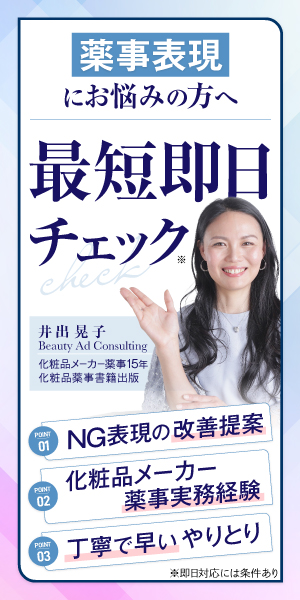表示名称成分詳細
エトキシジグリコール
成分番号(JP number): 550763
- INCI
- ETHOXYDIGLYCOL
- 定義(Description)
- 本品は、次の化学式で表されるエーテルアルコールである。2-(2-Ethoxyethoxy)ethanol; Carbitol; Diethylene glycol monoethyl ether; DEGEE
- 日本の規制情報(Japanese regulation information)
- 中文inci(CN/中国名称)
- 乙氧基二甘醇
- 中国の規制情報(Chinese regulation information)
- 【已使用化妆品原料目录(2021年版)】Maximum Historical Usage in Rinse-off Cosmetics(%): 10, Maximum Historical Usage in Leave-on Cosmetics(%): 2.6
- 韓国inci(KR/ハングル/성분명)
- 에톡시다이글라이콜
- CAS No.
- 111-90-0
- EC No.
- 203-919-7
- EUの規制情報(Restriction/Annex/Ref#)
III/297
原料情報
エトキシジグリコール / ETHOXYDIGLYCOL
エトキシジグリコールとは
エトキシジグリコールはエタノールとグリコールの二量体であるジエチレングリコールが結合したエーテルアルコールです。エーテルとはアルコール2分子から水1分子がとれて脱水縮合したものです。2つの炭化水素基が酸素を挟み込むように結合していて(-C-O-C-)、このような結合をエーテル結合といいます(2)。
エトキシジグリコールの物理・化学的性質は以下の通りです。
外観
物理的状態 液体
形状 液体
色:無色透明
臭い:弱い芳香臭
臭いのしきい(閾)値 データなし
pH データなし
融点・凝固点 -78℃
沸点、初留点及び沸騰範囲 201.9℃
引火点 97℃ (クリーブランド開放式)
蒸発速度 情報なし
燃焼又は爆発範囲 1.2 ~ 23.5vol%(空気中)
蒸気圧 0.0133kPa(25℃)
蒸気密度 4.62(空気=1)
比重(密度) 4.0.99g/cm3(20℃)
溶解度 水に易溶。エタノール,他の有機溶剤に可溶。
自然発火温度 204℃ 204℃
動粘性率 データなし
引用元:林 純薬工業株式会社 安全データシート
エトキシジグリコールは溶剤として化粧品に利用されています。
エトキシジグリコールは多少の吸湿性を有しており、水、エタノール、エーテル、アセトン、エチレングリコール、油脂、鉱物油、樹脂、高分子化合物などを溶かします。そのため、原料を溶かし込む溶媒として用いられます。
また、スキンケア系化粧品においてはグリセリンなど多価アルコール系保湿剤と同様の目的で、洗浄系製品においては可溶化剤・乳化助剤として用いられています。
参考文献
(1)林 純薬工業株式会社 安全データシート
エトキシジグリコールの配合目的
- 溶剤や可溶剤・乳化剤
エトキシジグリコールの安全性情報
https://online.personalcarecouncil.org/ctfa-static/online/lists/cir-pdfs/PRNS513.pdf
https://online.personalcarecouncil.org/ctfa-static/online/lists/cir-pdfs/pr193.pdf
日本語論文
なし
英語論文
Safety evaluation of some humectants and moisturizers used in cosmetic formulations.
Guillot JP, et al. Int J Cosmet Sci. 1982.PMID: 19469954
Comparative evaluation of skin moisture after topical application of 10% and 30% lactobionic acid.
Algiert-Zielińska B, et al. J Cosmet Dermatol. 2018. PMID: 29318715
Pinheiro VA, et al. Pharm Dev Technol. 2015.PMID: 24286179
Is Vitamin D(3) Transdermal Formulation Feasible? An Ex Vivo Skin Retention and Permeation.
D'Angelo Costa GM, et al. AAPS PharmSciTech. 2018. PMID: 29869312
Comparative evaluation of skinmoisture after topical application of 10% and 30% lactobionic acid.
Algiert-Zielińska B, et al. J Cosmet Dermatol. 2018. PMID: 29318715
Cha BJ, et al. Arch Pharm Res. 2001.PMID: 11440082
Pinheiro VA, et al. Pharm Dev Technol. 2015.PMID: 24286179
Mometasone furoate-loaded cold processed oil-in-water emulsions: in vitro and in vivo studies.
Raposo S, et al. Drug Deliv. 2015.PMID: 24559480
Transdermal administration of bromocriptine.
Degim IT, et al. Biol Pharm Bull. 2003.PMID: 12673032 Free article.
Neubert RH, et al. Skin Pharmacol Physiol. 2016. PMID: 27193887 Free article.


